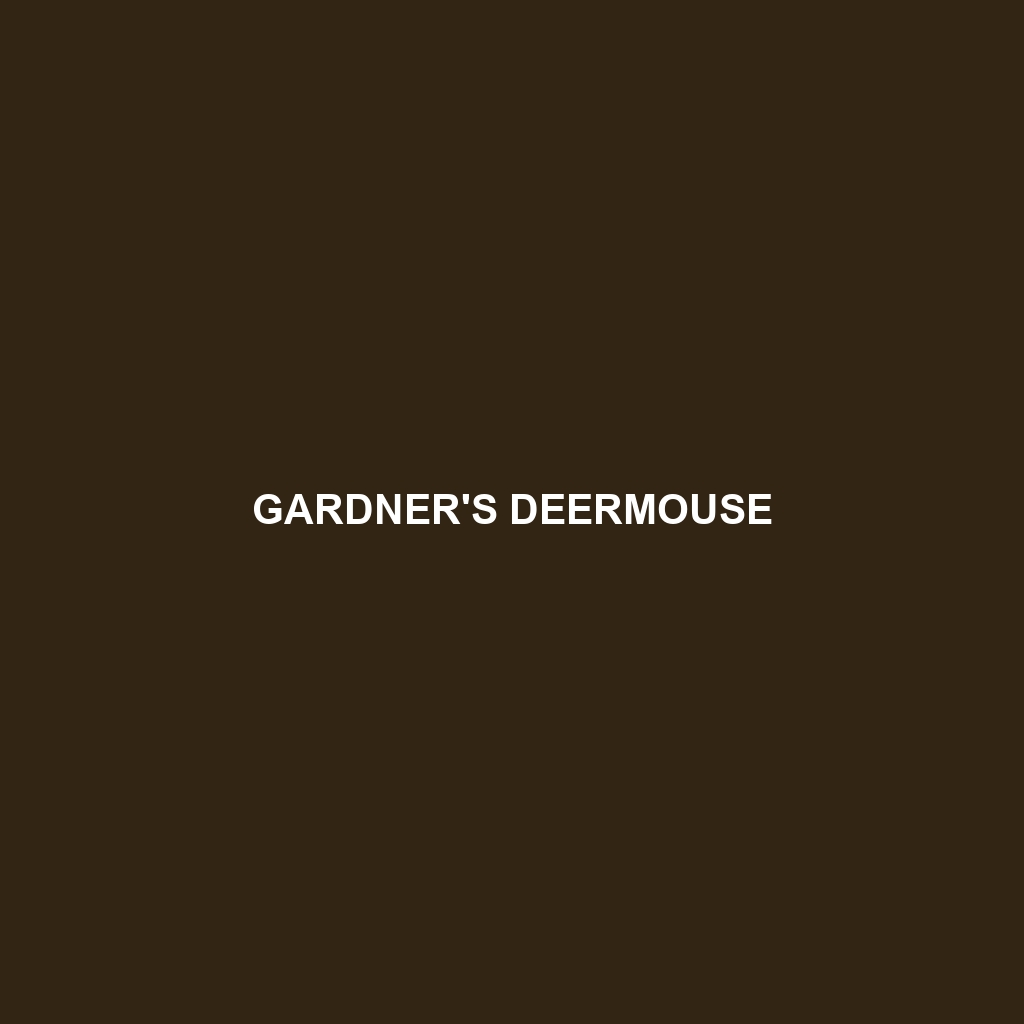Cotton Deermouse – Species Overview
Common Name: Cotton Deermouse
Scientific Name: Peromyscus gossypinus
Habitat
The Cotton Deermouse primarily inhabits the southeastern United States, specifically in areas such as coastal plains and wet grasslands. It prefers environments with abundant vegetation, including agricultural fields, grasslands, and wetland edges. The combination of these habitats provides ample shelter and food sources crucial for survival.
Physical Characteristics
The Cotton Deermouse is known for its small size, typically measuring between 7 to 10 inches in length, including its tail. Its fur is characterized by a soft coat, featuring a blend of light brown to gray coloration on the dorsal side, with a white underside. Notable features include large, rounded ears, a distinctively long tail, and large, dark eyes, which contribute to its adept nocturnal vision.
Behavior
This species displays primarily nocturnal behavior, being most active during the night. Cotton Deermice are known for their agility and are proficient climbers, often foraging in shrubs or trees. Their social structure is generally solitary, but they may exhibit communal nesting in areas with abundant food supply. This adaptability to their environment contributes to their resilience in varying habitats.
Diet
The diet of the Cotton Deermouse consists mainly of seeds, grains, fruits, and insects. It plays a significant role in seed dispersal, particularly in grasslands and agricultural settings. The cotton deermouse’s feeding habits are vital in maintaining the ecological balance, as their consumption of insects also helps regulate pest populations within their habitats.
Reproduction
The reproductive habits of the Cotton Deermouse are characterized by multiple breeding cycles throughout the year, typically peaking in the spring and summer months. Females can produce 2-5 litters annually, each containing 2-7 offspring. Notably, mothers exhibit strong parental care, ensuring the survival of their young, which are born blind and hairless but develop rapidly.
Conservation Status
Currently, the Cotton Deermouse is classified as ‘Least Concern’ according to the IUCN Red List; however, its populations can be affected by habitat loss due to urbanization and agricultural expansion. Continuous monitoring is essential to ensure this species remains stable within its ecosystems.
Interesting Facts
One interesting fact about the Cotton Deermouse is its ability to adapt to various environmental conditions, which has allowed it to thrive in agricultural landscapes. Additionally, these mice are known for their unique vocalizations, which help communicate with one another, particularly during mating seasons.
Role in Ecosystem
The Cotton Deermouse serves a crucial role in its ecosystem by acting as both a consumer and prey. As seed consumers, they contribute to plant propagation, while also serving as a food source for a range of predators, including birds of prey, snakes, and larger mammals. This mutualistic relationship highlights the interconnectedness of species within their habitats.
